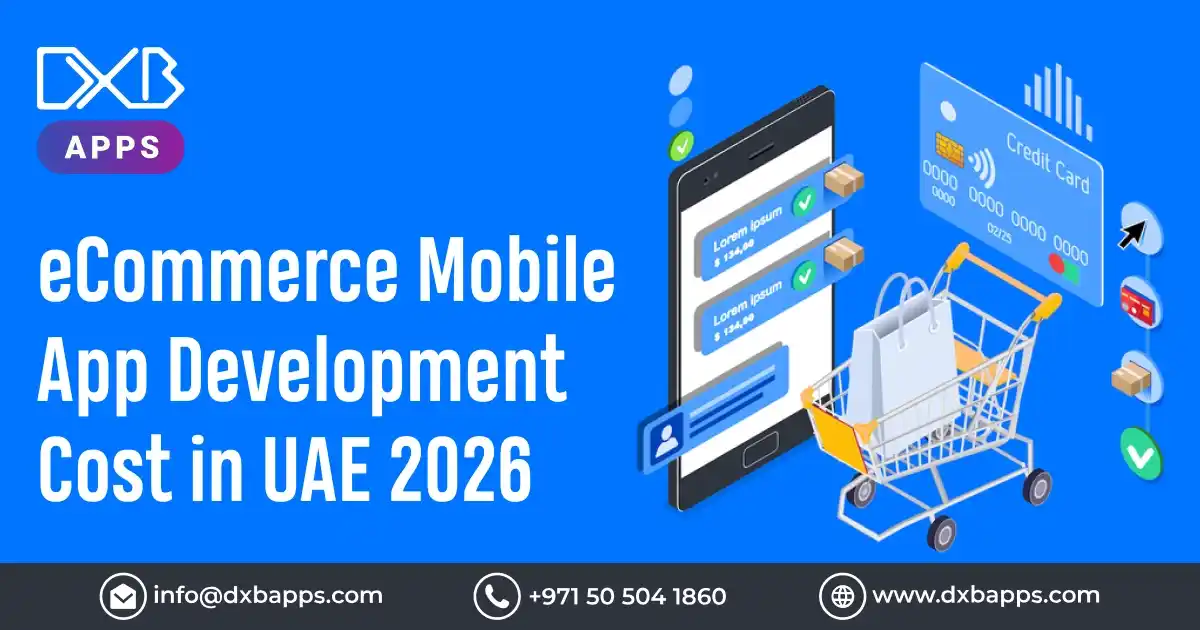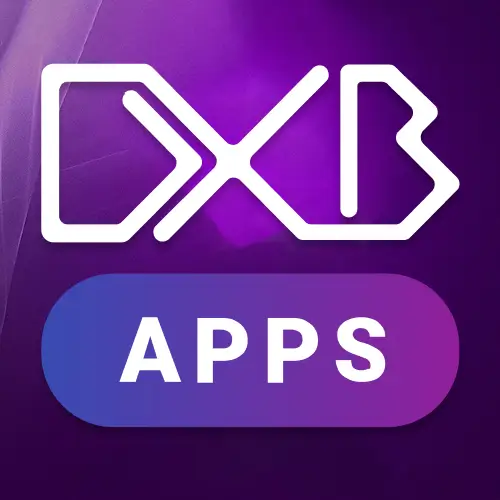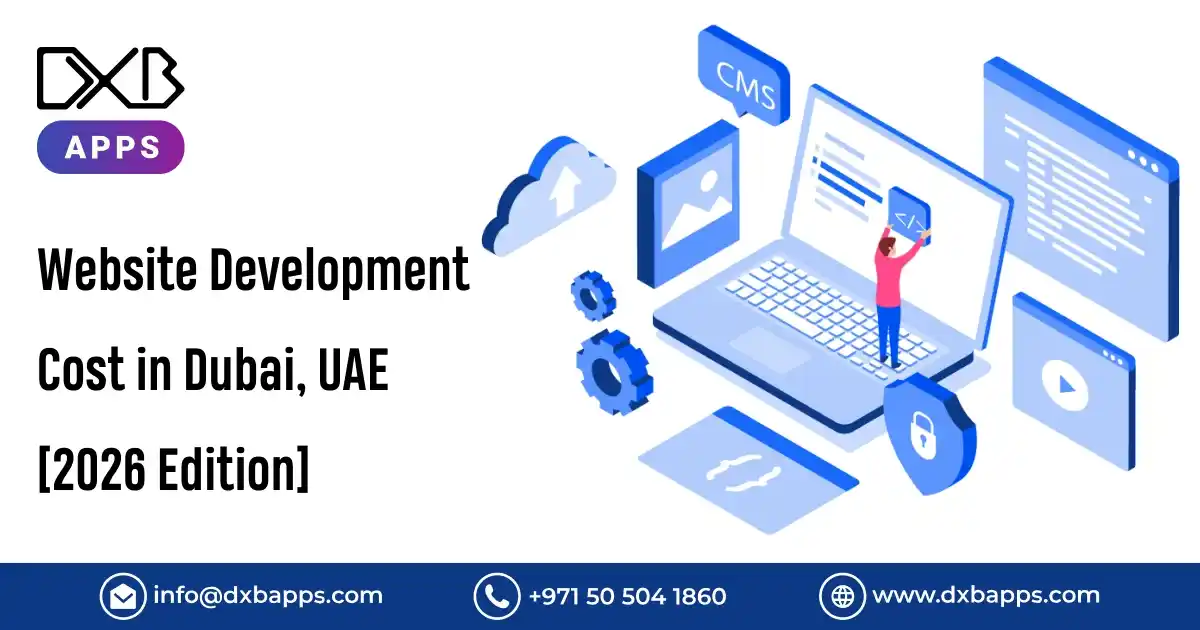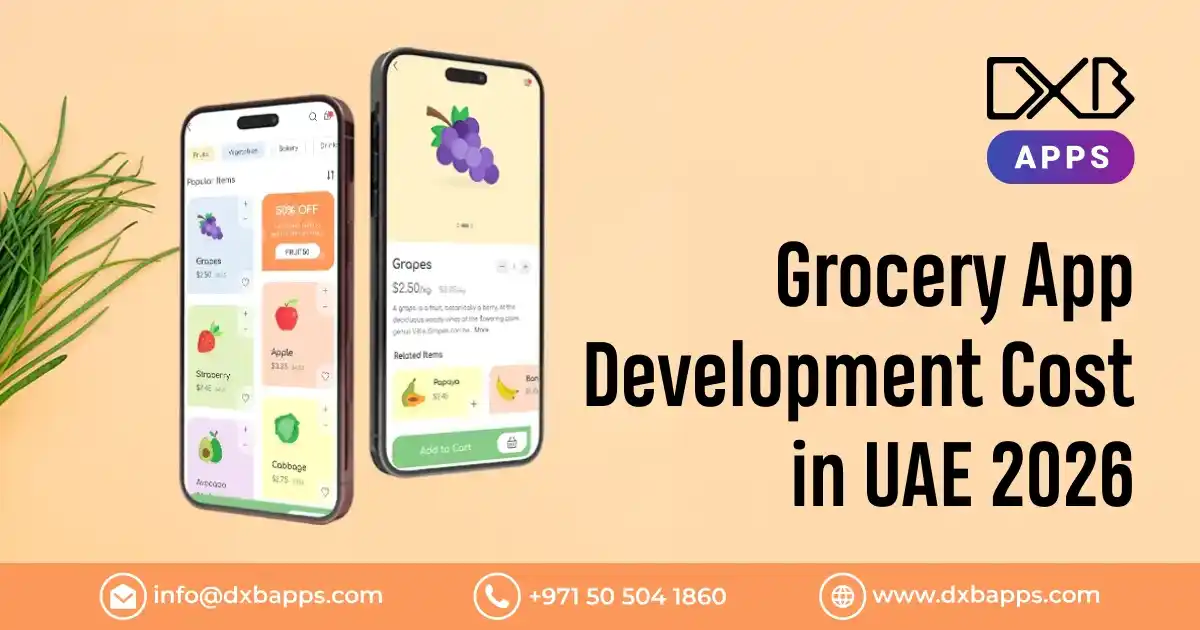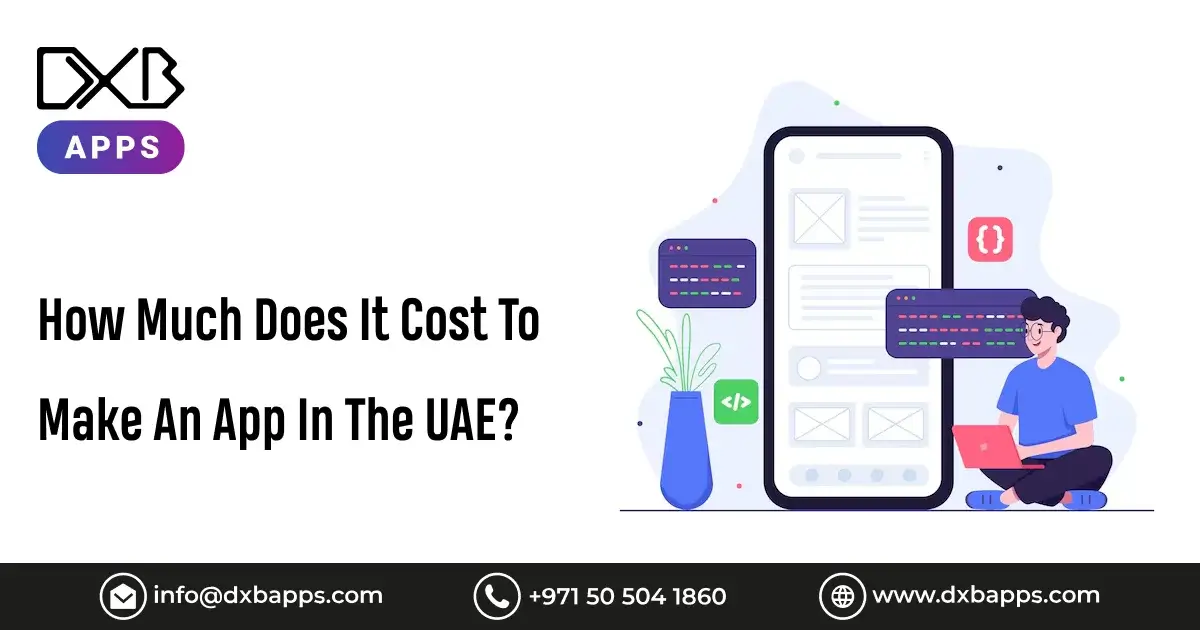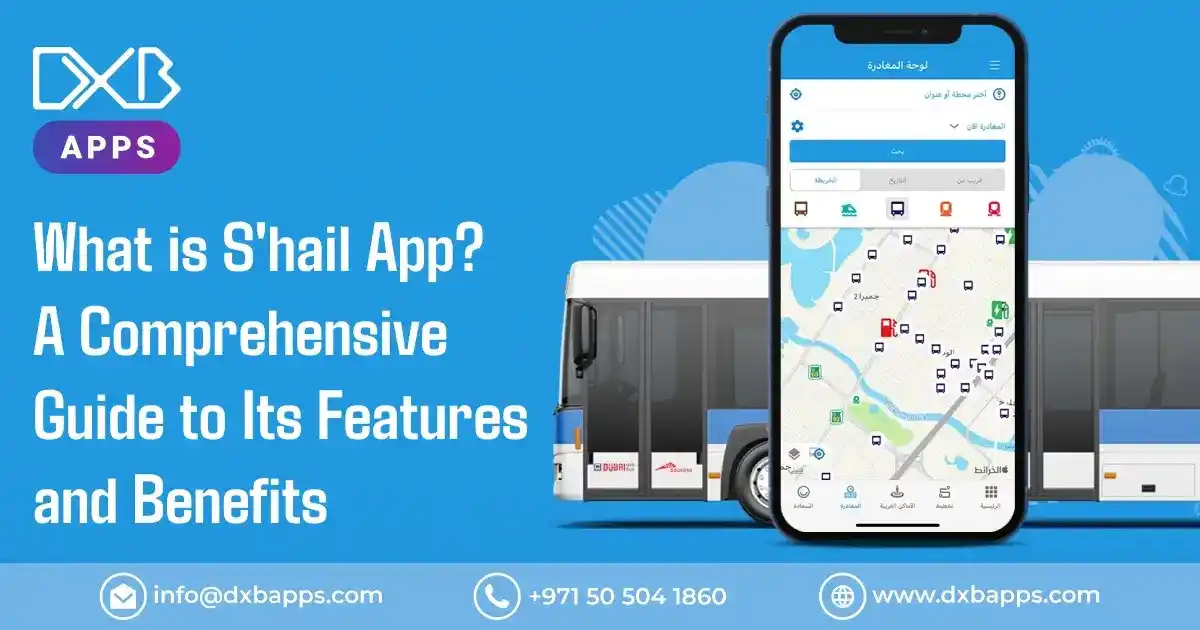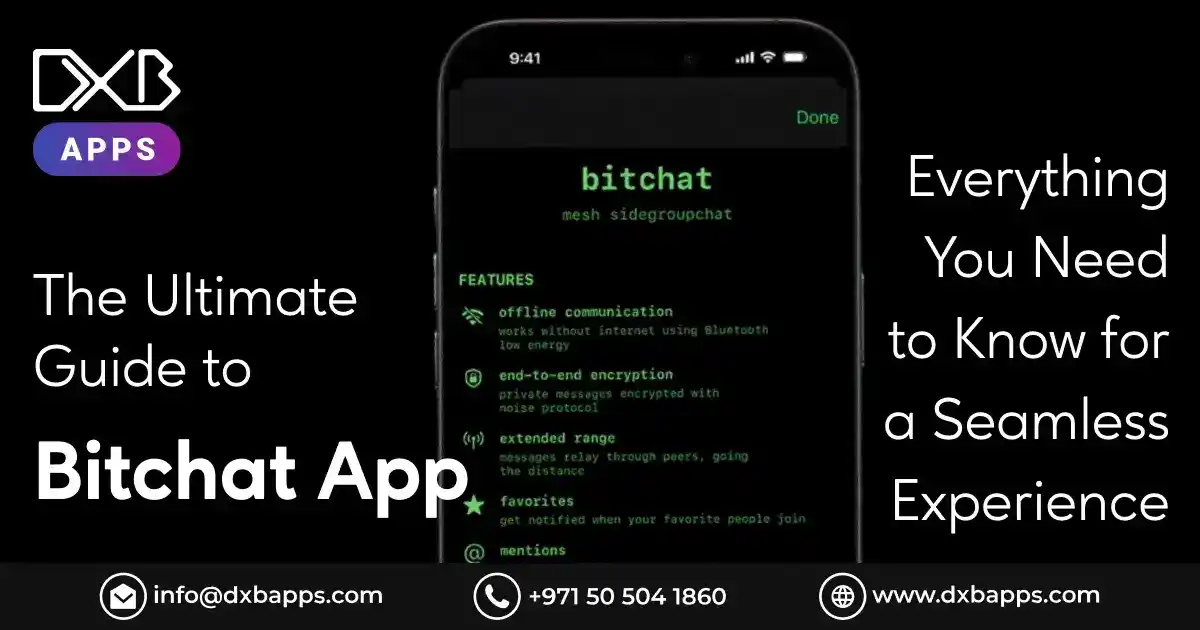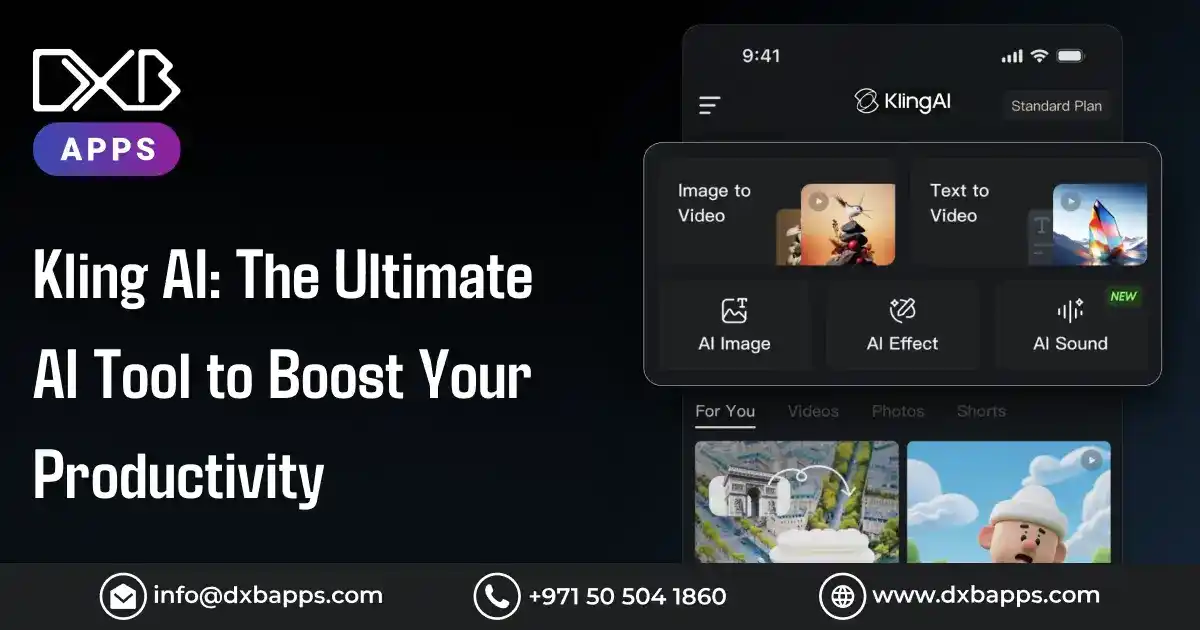As of 2026, mobile commerce in the UAE is full steam ahead. With more than 90% smartphone penetration and digitally native consumers, businesses are competing to have ecommerce apps launched that turn browsers into buyers. But before you go ahead and develop, you must understand the eCommerce Mobile App Development Cost —more so of eCommerce apps, where competition and customers are high.
"An app experience is your web handshake for your store-front— fluid, immersive, and an investment worth."
Market Context & Key Facts
Beginning with the big picture. eCommerce internationally is taking flight, and the UAE's share of it is expanding at breakneck rates. Market projections indicate eCommerce Mobile App Development Cost strategic heights by 2026—keeping pace with trends towards increased sophistication and frictionless UX.
UAE quotes simple eCommerce apps would cost anything from AED 50,000 on average, and sophisticated multi-vendor or AI-driven ones anywhere from AED 200,000. Typical budgetary allocation reduces to design costing AED 20,000, backend development AED 80,000, and maintenance for a year around AED 15,000. All of this dictates it all: budget your investment.
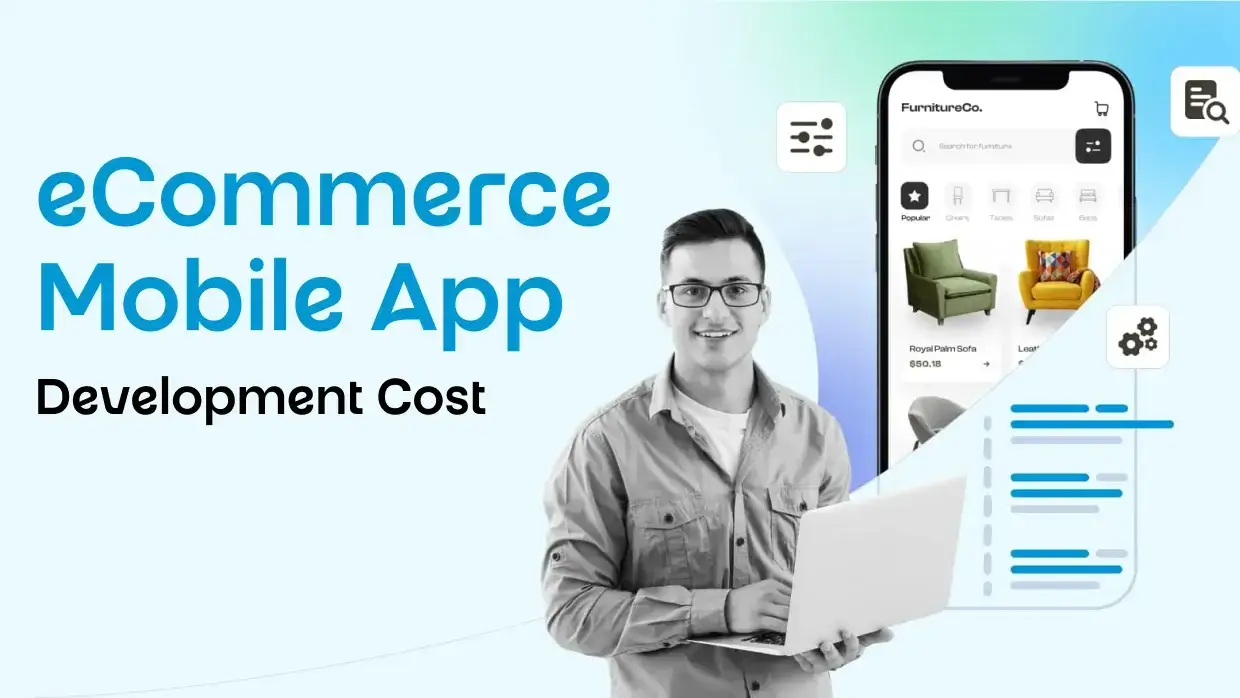
Global eCommerce App Market Size & Growth Trends
The eCommerce sector is experiencing strong growth in 2025, making eCommerce app development a strategic investment for businesses.
- According to BCG, eCommerce is projected to account for 41% of global retail sales by 2027, up from 18% in 2017, with a CAGR of 9%.
- McKinsey further estimates that the global social commerce market will exceed $2 trillion by 2025, driven by increased shopping through social media platforms.
- Mobile commerce continues to gain traction, with PwC reporting that 48% of consumers used a brand or store app during in-store shopping in 2024.
- Meanwhile, Statista projects the U.S. online retail market to surpass $1.5 trillion by 2026, with average revenue per user (ARPU) expected to reach approximately $4,650 by the end of 2025.
- Reflecting this shift, a BCG World Retail Congress survey found that 60% of retail innovation leaders are prioritizing investment in eCommerce.
Understanding the eCommerce Landscape in 2026
Market-Trending Technologies in eCommerce
eCommerce is poised for strong growth in 2026, with significant opportunities across multiple sectors. Marketers anticipate that the global eCommerce market will deliver higher returns than in previous years, driven by rising online sales and a growing number of digital shoppers. The following key trends are shaping the future of the industry:
Mobile-First Strategy
As the majority of online users now access websites through mobile devices, businesses are prioritizing mobile-optimized platforms to enhance user experience, improve engagement, and drive higher conversions.
Personalization
By leveraging data analytics and user behavior insights, eCommerce platforms deliver highly personalized shopping experiences, including tailored product recommendations and targeted marketing messages.
Looking to Develop a Powerful eCommerce App?
Partner with DXB APPS to design and develop a feature-rich eCommerce app with seamless shopping experiences, secure payment gateways, real-time order tracking, and scalable performance to support your growing business.
Build Your App TodayAR/VR Integration:
Augmented Reality and Virtual Reality are transforming online shopping by allowing customers to visualize products in real-time, creating an immersive, in-store-like experience from the comfort of their homes.
AI and Machine Learning:
Artificial Intelligence and Machine Learning enhance eCommerce operations through intelligent chatbots, predictive analytics, personalized recommendations, and automated customer support, leading to improved satisfaction and increased sales.
Blockchain for Secure Transactions:
Blockchain technology is strengthening eCommerce security by enabling transparent, tamper-proof, and reliable transactions, reducing fraud and increasing trust in digital payments.
Impact of 5G on Mobile eCommerce:
The rollout of 5G networks is accelerating mobile eCommerce by providing faster and more stable connectivity, enabling seamless integration of advanced technologies such as AR, VR, and real-time data-driven experiences.
UAE vs Global Market Trends for Ecommerce App Development
Understanding how the UAE eCommerce market compares with global eCommerce trends helps businesses tailor their strategies, especially when planning to build a ecommerce app or invest in ecommerce development Dubai.

UAE Market Trends
The UAE’s eCommerce sector is experiencing strong, sustained growth driven by high internet and smartphone penetration, advanced logistics infrastructure, and widespread adoption of digital payments. The market is steadily expanding, with sales projected to grow significantly over the next several years. In 2024, the UAE eCommerce market was estimated at around USD 8–11 billion, and forecasts indicate a continued upward trajectory through 2029 and beyond.
Several Characteristics set the UAE Market Apart
High digital connectivity: Internet usage rates exceed 90%, supporting broad online shopping adoption.
Mobile commerce dominance: A majority of online purchases in the UAE are now completed via smartphones.
Cross-border eCommerce: The UAE acts as a regional hub, with shoppers frequently buying from international platforms and businesses benefiting from strong logistics networks.
Rapid innovation adoption: Trends like quick commerce (ultra-fast delivery), AI-powered personalization, and multilingual experiences are shaping the landscape.
These trends are supported by government digital initiatives and free-zone incentives, which aim to enhance the eCommerce ecosystem and attract foreign investment.
| Aspect | UAE Market | Global Market |
|---|---|---|
| Market Size | Growing steadily; market valued in the billions with strong projected CAGR. | Trillions in total global online sales. |
| Growth Drivers | High internet penetration, mobile use, advanced logistics, and cross-border trade. | Broad global adoption, mobile commerce, AI & personalization. |
| Mobile Commerce | Dominant; majority of transactions via smartphones. | Increasing globally, mobile is driving a large share of online sales. |
| Innovation Adoption | Rapid uptake of quick commerce, multilingual UX, AI features. | Widespread integration of AI, AR/VR, and advanced analytics. |
| Role in Cross-Border Trade | Strategic logistics hub facilitating international commerce. | Global hubs vary by region; major platforms operate worldwide. |
Implications for Businesses
For companies looking to build an ecommerce app or invest in ecommerce development Dubai, these trends suggest a fertile yet competitive environment. The UAE’s tech-savvy, mobile-first consumers and strong infrastructure align closely with global expectations, but the localized nuances, such as multilingual support, cross-border logistics, and quick commerce demand, must be factored into product strategy and development priorities.
Tailoring features and user experiences to both local tastes and global best practices can help maximize engagement and ROI in this fast-evolving market. The ecommerce app development cost varies based on app features, design complexity, and platform selection. Businesses in the UAE evaluate the app development cost Dubai to balance quality, compliance, and timelines.
Types of eCommerce Apps and Their Cost Range
The type of eCommerce app you select has a direct impact on overall development cost, feature complexity, and delivery timeline. Each business model comes with its own technical requirements, integrations, and scalability needs. Below are the most common eCommerce app types along with their estimated development costs:
Single-Store eCommerce App
Designed for businesses selling their own products through a single, branded storefront. These apps focus on product management, payments, and a seamless customer experience.
Estimated Cost: $30,000 – $80,000
Multi-Vendor Marketplace App
Built to support multiple sellers, each with their own storefront, product listings, and order management similar to platforms like Amazon or Flipkart.
Estimated Cost: $80,000 – $180,000
B2B eCommerce App
Tailored for wholesale operations, featuring bulk ordering, custom pricing models, role-based user access, and account management for business clients.
Estimated Cost: $60,000 – $150,000
Subscription-Based eCommerce App
Enables recurring payments, membership plans, and controlled access to products or digital content through subscription tiers.
Estimated Cost: $50,000 – $130,000
Niche or Vertical Marketplace App
Targets a specific industry or product category—such as fashion, electronics, or organic goods with curated listings and advanced filtering options.
Estimated Cost: $40,000 – $100,000
Social Commerce App
Combines shopping with social interaction by incorporating features like user feeds, content sharing, influencer storefronts, and in-app engagement tools.
Estimated Cost: $70,000 – $140,000
Develop a Scalable eCommerce App with DXB APPS
Let DXB APPS create a scalable eCommerce app for your business that grows with you, offering easy product management, secure payments, and a smooth checkout experience for your customers.
Get Started on Your App TodayFactors That Affect eCommerce App Development Cost
The ecommerce app development cost depends on factors such as app complexity, platform selection, and required features.
App Complexity (Simple, Medium, Enterprise)
The complexity of an eCommerce app is one of the most significant cost drivers in development.
Basic Ecommerce App
A simple eCommerce app with basic product listings, a shopping cart, and checkout functionality requires fewer development hours and less backend engineering, making it the most budget-friendly option.
Features:
- User authentication and account registration
- Simple product catalog with fewer than 25 SKUs
- Basic search functionality
- Shopping cart and streamlined checkout process
- Integration with a single payment gateway
- Push notifications for order and delivery updates
Development Timeline: 3 - 6 months
Estimated Cost: USD 15,000–30,000
Key Factors Influencing Cost:
- Use of pre-designed templates to reduce UI/UX design expenses
- Limited third-party integrations, such as Stripe or PayPal, to keep development straightforward and cost-effective
Mid-Level Ecommerce App
Medium-complexity apps include advanced features such as user profiles, reviews, wishlists, filters, and payment gateways; these naturally increase development time and resource allocation.
Features:
- All basic app functionalities, plus:
- Advanced search with filters such as price, category, and customer reviews
- Multi-language and multi-currency support for global users
- Customer reviews and rating system
- Real-time order tracking and status updates
- Basic admin panel for managing products, users, and orders
Development Timeline: 6 - 9 months
Estimated Cost: USD 30,000–70,000
Key Factors Influencing Cost:
- Customized UI/UX design to ensure strong branding and visual consistency
- Integration with multiple third-party services, including shipping APIs and marketing automation tools
Advanced Ecommerce App
Enterprise-level eCommerce solutions integrated with business systems (ERP/CRM), AI-driven recommendations, omnichannel support, and rich analytics require specialized developers and significant infrastructure planning.
In markets like ecommerce development Dubai, where client demands often lean toward scalable, feature-rich platforms, complexity directly translates to higher cost estimates due to increased planning, testing, and deployment efforts.
Features:
- All mid-level app functionalities, plus:
- AI-powered product recommendations for personalized shopping experiences
- AR/VR capabilities for immersive product visualization
- Intelligent chatbots for 24/7 customer support
- Social media integrations for product sharing and social logins
- Multi-vendor marketplace support with split payment systems
- Advanced analytics dashboards for sales, users, and performance insights
Development Timeline: 9 - 12+ months
Estimated Cost: USD 70,000–200,000+
Key Factors Influencing Cost:
- High degree of customization to ensure scalability and long-term growth
- Use of advanced technologies such as AI, machine learning, and AR/VR frameworks
- Robust backend infrastructure to support high traffic volumes and complex transactions
The total cost of developing an eCommerce app can range from USD 15,000 to over USD 200,000, depending on features, complexity, and technology choices. On average, most brands can expect an investment of USD 50,000–100,000 for a well-balanced, scalable eCommerce solution.
Platform Choice (iOS, Android, Cross-platform)
Platform choice is another core factor influencing development costs.
- Developing a standalone iOS or Android app means maintaining two separate codebases, each with its own design guidelines and testing workflows. This typically raises the total cost compared to focusing on a single platform.
- Cross-platform development (using frameworks like React Native or Flutter) can reduce cost by sharing most of the codebase across both platforms, but may still require platform-specific adaptations.
- In the e-commerce development Dubai landscape, businesses often weigh cross-platform approaches for cost efficiency against native development for performance and rich UX, which can further affect budgeting decisions. The development ecommerce software process involves planning, designing, coding, testing, and deploying a secure online shopping solution.
Design & UX/UI
The design and user experience (UX/UI) layer determines how users interact with an eCommerce app and heavily influences development effort. Custom, visually-rich, and brand-aligned design work such as animated transitions, custom icons, and bespoke checkout flows requires skilled designers and iterative testing, increasing both design time and development cost.
Prioritizing a seamless, intuitive UX tailored to target customers is especially common in premium markets, including ecommerce development Dubai, where consumer expectations for polished experiences are high. Poor or minimal design reduces upfront cost but may negatively impact user engagement and conversion rates in competitive markets.
Third-Party Integrations
Integrations with third-party services are essential for modern eCommerce functions but add to development complexity and cost. Examples include payment gateways (Stripe, PayPal, local providers), shipping and logistics APIs, inventory management systems, marketing automation tools, and social login or social commerce extensions.
Each integration may require unique authentication, testing, and ongoing updates to remain compatible with API changes. In ecommerce development Dubai, sellers often need integrations with region-specific payment and delivery partners, adding custom work and potentially higher integration costs.
Security & Compliance
Security and compliance are non-negotiable in eCommerce development. Implementing secure data handling, encryption, PCI-DSS compliance for payment processing, GDPR (or regional equivalents), and secure authentication all require experienced developers and thorough testing. Robust security safeguards both the business and customers from fraud, data breaches, and regulatory penalties.
Because highly secure and compliant systems take more time to build and verify, they add to development costs. Businesses investing in ecommerce development Dubai are increasingly aware of these requirements, especially when dealing with cross-border transactions and sensitive user data.
Maintenance & Updates
Finally, the lifecycle cost of an eCommerce app extends well beyond initial development. Ongoing maintenance, updates, performance optimization, feature upgrades, and OS version support contribute significantly to total cost of ownership (TCO).
Apps that aren’t regularly updated can quickly become outdated or insecure, resulting in poor user experiences or vulnerabilities. Budgeting for regular maintenance ensures your eCommerce platform stays current, performant, and aligned with evolving user expectations, an important consideration for businesses pursuing long-term growth through ecommerce development Dubai.
Supercharge Your Online Presence with Website and App
DXB APPS can help you develop an eCommerce website and app that offer a seamless shopping experience, from browsing to checkout. Watch your sales soar with a fully integrated solution that puts your business ahead of the competition.
Launch Your eCommerce App & Website TodayFeature-Level Cost Mapping for Ecommerce App Development
When planning an eCommerce app, breaking down costs at the feature level helps businesses prioritize functionality based on budget and growth goals. Feature selection directly impacts development time, technical complexity, and long-term maintenance requirements. Understanding the ecommerce app development cost helps companies choose between custom development and ready-made ecommerce solutions.
Customer-Side Features
User Registration & Login
Customers can quickly sign up or log in using email, phone number, or social media accounts for seamless access.
Profile Management
Users can manage personal information, save multiple delivery addresses, and store preferred payment methods in one place.
Product Catalog
An intuitive browsing experience that lets users explore products through well-organized categories and subcategories.
Advanced Product Filters
Helps users find products faster by filtering results based on price, brand, availability, discounts, ratings, and other criteria.
Product Detail Pages
Displays comprehensive product information, including images, descriptions, specifications, pricing, and stock availability.
Wishlist / Favorites
Allows users to save products for future purchases, boosting engagement and return visits.
Shopping Cart
A centralized cart where users can review selected items, adjust quantities, or remove products before checkout.
Secure Checkout
Ensures a fast and encrypted checkout process with minimal steps to complete purchases safely.
Multiple Payment Options
Supports various payment methods such as credit/debit cards, digital wallets, UPI, net banking, and cash on delivery.
Order Tracking
Provides real-time updates on order status, shipping progress, and estimated delivery timelines.
Order History
Enables users to view previous orders and easily reorder items for added convenience.
Push Notifications
Delivers timely alerts for order updates, special offers, abandoned cart reminders, and personalized promotions.
Product Reviews & Ratings
Allows customers to leave and view reviews, helping build credibility and informed purchasing decisions.
In-App Chat & Customer Support
Offers instant assistance through live chat, chatbots, or direct support communication.
Return & Refund Management
A user-friendly system for initiating return or refund requests and tracking their progress.
Loyalty & Rewards Program
Tracks reward points earned through purchases, encouraging repeat engagement and customer retention.
Language & Currency Selection
Enables users to switch languages and currencies based on their region for a localized shopping experience.
Referral Program
Allows users to invite friends and earn rewards or discounts for successful referrals.
Admin-Side Features
Role-Based Admin Access
Provides secure admin logins with permission levels assigned by role, such as super admin, operations manager, or content editor.
Dashboard Overview
Presents real-time insights into key metrics including order volume, revenue performance, inventory levels, and customer activity.
Product Management
Allows administrators to add, edit, remove, and organize products while managing pricing, descriptions, images, and availability.
Inventory Management
Tracks stock levels in real time and generates alerts for low inventory or restocking needs.
Order Management
Enables admins to review, update, and fulfill orders, manage order statuses, and handle customer requests efficiently.
Customer Management
Provides access to customer profiles, order history, support interactions, and purchasing behavior.
Promotions & Coupon Management
Supports the creation of scheduled discounts, promotional campaigns, flash sales, and coupon codes to drive conversions.
Shipping & Tax Configuration
Allows customization of shipping methods, delivery zones, and tax rules based on regional requirements.
Content Management System (CMS)
Manages non-product content such as banners, landing pages, blogs, FAQs, and legal policies.
Push Notification Management
Enables targeted notifications for promotions, announcements, order updates, and segmented user groups.
Reports & Analytics
Generates detailed, exportable reports covering sales trends, top-performing products, traffic patterns, and customer insights.
Review Moderation
Allows admins to approve, respond to, or remove user reviews to maintain content quality and trust.
Returns & Refund Processing
Manages return requests, refund approvals, and status tracking in a streamlined workflow.
User Behavior Analytics
Analyzes in-app user journeys, drop-off points, engagement patterns, and conversion behavior.
Transaction Management
Tracks all payment transactions, flags failed payments, and assists in resolving billing issues or disputes.
Multi-Language & Currency Management
Supports localization of content and pricing to ensure seamless operations across multiple regions and markets.
If you want to build a ecommerce app, choosing the right team for development ecommerce software is key to getting a fast, secure, and scalable product.
Ecommerce App Development Phase Cost Breakdown
When planning to build a ecommerce app, it’s important to understand how costs are distributed across each stage of the development lifecycle. Every phase from early planning to long-term support, plays a role in shaping the final budget and overall quality of the product. Businesses should evaluate their requirements carefully to estimate the ecommerce app development cost accurately.

Discovery & Research
This phase focuses on defining business goals, identifying the target audience, analyzing competitors, and finalizing functional requirements. Activities typically include requirement gathering, feature prioritization, technical feasibility analysis, and project roadmap creation. Although discovery and research account for a smaller share of the total cost, a well-executed planning phase helps avoid scope creep and expensive revisions during later stages.
UI/UX Design Cost
UI/UX design costs depend on the level of customization and visual sophistication required. Basic designs using standard layouts and components are more cost-effective, while custom branding, interactive prototypes, animations, and usability testing increase expenses. Investing in strong UI/UX improves user engagement, reduces friction during checkout, and ultimately increases conversion rates, making it a critical part of eCommerce app development.
Backend Development Cost
Backend development forms the technical backbone of the app and often represents a major portion of the budget. This phase includes database architecture, user management, product catalogs, order processing, payment handling, and security implementation. The cost of development ecommerce software increases when the backend must support scalability, high traffic, advanced analytics, and custom business logic. Complex system architecture and cloud infrastructure setup also add to backend development expenses.
Frontend Development Cost
Frontend development involves building the user-facing components of the app, such as product listings, navigation, shopping carts, and checkout flows. Costs vary depending on platform choice (iOS, Android, or cross-platform), design complexity, and performance requirements. Features like smooth animations, real-time updates, and personalized user interfaces require additional development time and expertise, which can raise frontend costs.
QA & Testing Cost
Quality assurance and testing ensure the app works reliably across different devices, screen sizes, and operating systems. This phase includes functional testing, performance testing, usability testing, and security validation. While often underestimated, thorough testing helps prevent post-launch issues, reduces customer complaints, and protects brand reputation. More complex apps naturally require more extensive testing, increasing this portion of the budget.
Deployment Cost
Deployment costs cover preparing the app for launch, configuring servers, setting up production environments, and publishing the app to relevant app stores. This stage may also include final optimization, compliance checks, and app store approval support. Although deployment costs are usually lower than development costs, poor preparation can lead to delays or additional revisions.
Ongoing Maintenance Cost
Ongoing maintenance is a recurring cost that ensures the app remains secure, stable, and up to date. This includes bug fixes, performance optimization, OS compatibility updates, and enhancements based on user feedback. As development ecommerce software relies on third-party integrations such as payment gateways, shipping services, and analytics tools, regular updates are required to maintain compatibility and security. Long-term maintenance planning is essential for sustaining app performance and business growth.
When planning a mobile app development project, estimating the app development cost Dubai helps startups align their budget with business goals.
What Affects eCommerce App Development Cost?
1. App Complexity
The more advanced your app, the more money. Basic features include checkout flow, product catalog, and user login. Product recommendations via AI, AR try-ons, and multi-vendor dashboards are advanced features that cost a pretty penny—and worth it.
2. Platform
Ecommerce app development of a single-platform mobile app on iOS or Android is cheaper, but two native apps will be double that. Cross-platform solutions such as React Native or Flutter provide decent alternatives, have the shared code, and provide the same UX on both platforms—usually saving 30–40% compared to two different native implementations.
3. UX & UI Design
A strong UX/UI - with user flow mapping, branded graphics, animations, and mobile-first design—is conversion driving. Basic designs will be AED 10,000–20,000, and high-end, custom apps will be AED 25,000 - 40,000.
4. Backend & Integrations
Here are the engines of the UX - databases, APIs, payment gateways, inventory syncs, analytics, and security measures. Backend and integrations will be AED 30,000 to AED 100,000 based on complexity.
5. Development Team
UAE mobile app developers cost more (AED 200–350/hr) since they're local and aware of the market. Outsourcing to South Asia or Eastern Europe brings this down to AED 80–150/hr without compromising on quality, particularly for clearly defined-scope projects.
6. Testing & QA
Quality assurance is what keeps the app running as expected on devices and loads up features. It consumes 10–15% of the budget and involves functional, performance, and compatibility testing.
7. Maintenance & Updates
Yearly maintenance fees post-launch of 15–20% of initial development expenses are to be expected. Routine bug fixing, feature tweaking, security patches, and compliance updates are included in this.
Hidden and Long-Term Costs of eCommerce App Development
Beyond the initial development budget, eCommerce apps incur several hidden and long-term costs that businesses often overlook during planning. Understanding these expenses is essential for sustainable growth and avoiding unexpected financial strain after launch. Understanding the ecommerce app development cost helps companies choose between custom development and ready-made ecommerce solutions.
Infrastructure and Hosting Costs
First, infrastructure and hosting costs continue long after deployment. As user traffic grows, servers, cloud storage, content delivery networks (CDNs), and bandwidth usage increase, leading to higher monthly expenses. Scaling infrastructure to handle peak shopping seasons can significantly impact operational budgets.
Third-Party Service Fees
Third-party service fees accumulate over time. Payment gateways, shipping providers, analytics tools, marketing automation platforms, and customer support systems often charge transaction-based or subscription fees. As the app grows, higher transaction volumes and expanded integrations can steadily raise these costs.
Security and Compliance Upkeep
Another major long-term expense is security and compliance upkeep. Regular security audits, vulnerability testing, SSL renewals, fraud prevention tools, and compliance updates for data protection and payment regulations require ongoing investment. Failing to maintain strong security can result in financial losses, legal penalties, and reputational damage.
Performance Optimization and Scalability
Performance optimization and scalability enhancements also add to long-term costs. As new features are introduced and user behavior evolves, the app must be optimized to maintain fast load times and smooth performance. Refactoring code, upgrading frameworks, and improving database efficiency require dedicated development resources.
Customer Support and Feature Evolution
Customer support and feature evolution contribute to ongoing expenses. Handling user queries, resolving issues, and continuously improving features based on feedback are essential for retention and competitiveness. Over time, these recurring efforts can equal or even exceed the initial development cost, making long-term budgeting a critical part of any eCommerce development Dubai strategy.
When planning a mobile project, estimating the app development cost Dubai helps startups align their budget with business goals.
UX/UI Complexity & Cost Impact
The complexity of UX/UI design has a direct and measurable impact on the overall eCommerce app development cost. While basic layouts and standard components help keep costs low, more sophisticated design requirements significantly increase design and development effort.
Simple UX/UI designs typically use pre-built templates, minimal animations, and standard navigation patterns. These are faster to design and implement, making them suitable for MVPs or startups with limited budgets. However, they may offer limited differentiation in highly competitive markets.
Medium-level UX/UI complexity introduces custom branding elements, refined user journeys, advanced filtering, interactive product pages, and responsive layouts optimized for multiple devices. This level requires more design iterations, usability testing, and frontend development time, which increases costs but improves engagement and conversion rates.
Highly complex UX/UI designs involve custom animations, micro-interactions, personalized user flows, accessibility compliance, and immersive experiences such as gesture-based navigation or dynamic content loading. These designs demand close collaboration between designers and developers, extensive prototyping, and rigorous testing. As a result, development timelines are longer and costs are higher.
Ultimately, investing in advanced UX/UI can deliver strong returns through better usability, higher customer retention, and improved brand perception, but businesses must balance visual sophistication with budget constraints and long-term scalability goals.
Advanced Ecommerce App Development Features
Advanced eCommerce features significantly increase both initial development cost and long-term operational expenses. These features require specialized skills, complex integrations, and ongoing optimization, making them one of the biggest escalators in eCommerce app development cost.
AI-Powered Personalization Engine
Uses machine learning to deliver highly relevant product recommendations based on browsing behavior, purchase history, location, and user preferences significantly boosting engagement and conversion rates.
AI Chatbots & Virtual Shopping Assistants
Intelligent chatbots assist users with product discovery, personalized suggestions, FAQs, order tracking, and returns, reducing customer support workload while improving response times.
Predictive Search & Smart Filtering
AI-driven search recognizes user intent, typos, and synonyms to surface accurate results, while adaptive filters dynamically adjust based on availability and user behavior.
Behavior-Based Retargeting
Tracks real-time user activity to trigger personalized push notifications or email campaigns for abandoned carts, price drops, and back-in-stock products.
AI-Driven Dynamic Pricing
Automatically adjusts pricing in real time based on demand fluctuations, competitor analysis, inventory levels, and user segments to optimize revenue and conversions.
AI-Based Inventory Forecasting
Predicts future stock needs using historical sales data, seasonal trends, and buying patterns minimizing overstock, stockouts, and operational inefficiencies.
Visual Search & Image Recognition
Allows users to upload images or screenshots, enabling AI to identify and match similar or identical products from the catalog.
Voice Commerce Integration
Supports voice-enabled shopping through assistants like Google Assistant and Alexa, enabling hands-free product search, order tracking, and reordering.
AR-Powered Virtual Try-On
Lets customers virtually try fashion items, accessories, cosmetics, or home décor using augmented reality improving confidence and reducing returns.
Product Customization Tools
AI-enabled interfaces allow users to personalize products (e.g., text engraving, color or configuration selection) with real-time pricing updates.
Smart Invoicing & Billing Automation
Automates invoice generation, tax and discount application, and accounting system synchronization for a seamless post-purchase workflow.
Advanced Analytics Dashboard (Admin)
AI-powered dashboards provide deep insights into customer lifetime value, churn prediction, cart abandonment trends, and product affinity to support data-driven decisions.
AI-Based Fraud Detection
Monitors transactions and user behavior to detect anomalies, prevent fraudulent activity, and safeguard payments and brand trust.
Gamification & Engagement Features
Incorporates interactive elements such as spin-to-win, scratch cards, loyalty milestones, and reward streaks to enhance engagement and retention.
One-Tap Reordering
Identifies frequently purchased items and enables instant repeat orders, improving convenience for loyal and high-frequency customers.
Step-by-Step E-commerce App Development Process
A structured, step-by-step development process helps ensure that an eCommerce app is delivered on time, within budget, and aligned with business goals. Each stage builds on the previous one, reducing risks and improving overall product quality.Understanding the app development cost Dubai helps startups and enterprises plan realistic budgets and timelines.
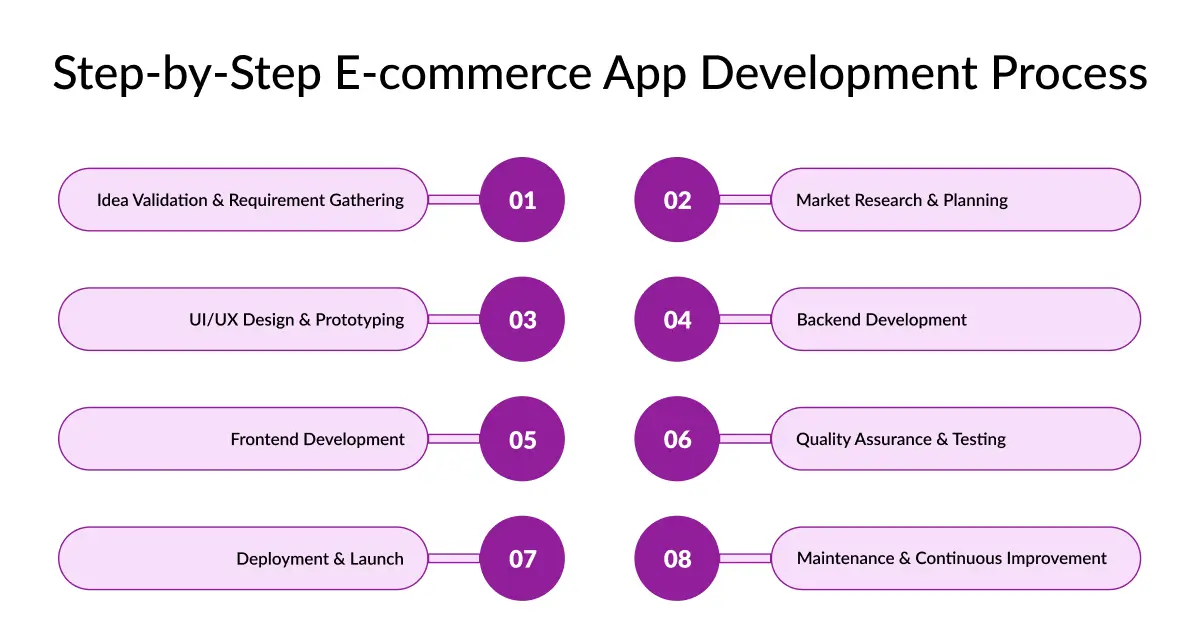
Step 1: Idea Validation & Requirement Gathering
The process begins with defining the business idea, target audience, and core objectives of the app. During this stage, requirements are gathered, features are prioritized, and technical feasibility is assessed. Clear documentation at this step helps prevent scope creep and unexpected cost increases later in development.
Step 2: Market Research & Planning
In this phase, competitors are analyzed, user behavior is studied, and a detailed project roadmap is created. Technology stacks, platforms, and integration needs are finalized. Strong planning ensures realistic timelines and cost estimates before development begins.
Step 3: UI/UX Design & Prototyping
Designers create wireframes, user flows, and interactive prototypes to visualize the app experience. Feedback is collected and designs are refined before development starts. This step reduces costly design changes during coding and ensures a user-friendly interface.
Step 4: Backend Development
Backend development focuses on building the server-side logic, databases, APIs, and integrations required for core functionality. This includes user management, product catalogs, order processing, payment handling, and security implementation. A robust backend ensures scalability and reliable performance as the user base grows.
Step 5: Frontend Development
Frontend development brings the design to life by building the user-facing components of the app. This step ensures smooth navigation, responsive layouts, and seamless interaction across devices and platforms. Performance optimization and cross-platform compatibility are also addressed at this stage.
Step 6: Quality Assurance & Testing
The app undergoes rigorous testing to identify and fix bugs, performance issues, and security vulnerabilities. Functional testing, usability testing, and compatibility testing ensure the app works as intended across different devices and operating systems.
Step 7: Deployment & Launch
Once testing is complete, the app is prepared for launch. This includes server configuration, app store submissions, compliance checks, and final performance optimization. A controlled rollout helps ensure a smooth launch and minimizes post-release issues.
Step 8: Maintenance & Continuous Improvement
After launch, ongoing maintenance is required to fix bugs, update features, improve performance, and maintain security. User feedback and analytics guide future updates, helping the app evolve alongside business and market needs.
When you build a ecommerce app, understanding the ecommerce app development cost helps you plan features within your budget.
Approximate Cost Ranges (AED)
With no tables, the following is an approximate word estimate:
Minimal Single-Vendor Application (catalog, login, basket): AED 50,000–80,000
This is the most fundamental eCommerce app type, best suited for new companies or startups. It features user login, product listing, checkout, and cart. The app has a quick development and publishing time with minimal backend needs and minimal UI/UX. It is cheap and great for testing your idea before scaling to high-end functionalities or multi-vendor marketplaces.
Mid-Tier Multi-Vendor App (vendor dashboards, order tracking): AED 100,000–200,000
This category of app is able to list and manage inventory from different vendors. It needs a more complex backend to store single dashboards, inventory management, and sales monitoring. User reviews, order tracking, customer support chat, and coupon codes are normal additional features. This product suits expanding businesses that want to build an application like Amazon or Noon.
Feature-Rich Enterprise App (AI, AR, real-time analytics): AED 200,000+
Enterprise applications provide enterprise-class features such as AI-driven product suggestions, AR-driven product previews, and real-time sales insights. They are developed on scalability, security, and premium-grade user experience. They typically arrive with CRM integrations, ERPs, and third-party APIs integrated. The price is a reflection of the sophisticated tech stack, extended development cycle, and intricate UI/UX design required for a smart and silky-smooth shopping experience.
Maintenance fees AED 15,000–40,000 per annum
Even once released, your app must be serviced from time to time. Servicing means patching bugs, moving to the latest versions of the OS, putting in little features, and accommodating newer hardware. Security patches and optimizations cannot be skipped either. Having 15–20% of your original app price annually keeps the app running smoothly, secure, and simple to use without expensive breakdowns or disastrous user experiences down the road.
These different scales are a sign that you can scale up in ambition and phase. Modest beginnings, after a while, expansion.
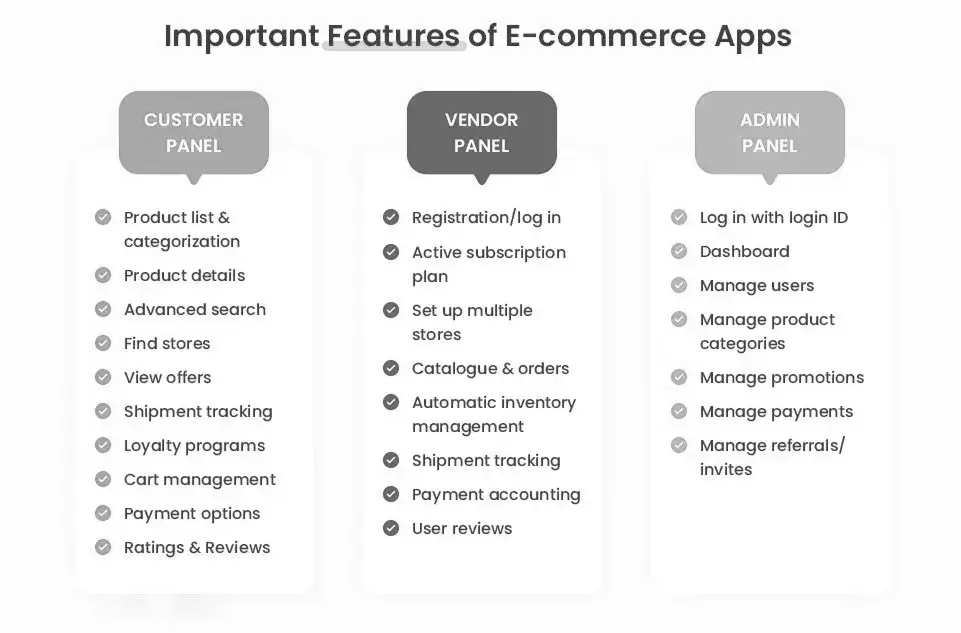
Saving Money Without Scrimping
The smarter strategies can be money-savers:
Start with an MVP
Start your eCommerce app as a Minimum Viable Product (MVP) with minimal necessary features such as product catalog, shopping cart, and secure payment. This enables you to get to market rapidly and gain real user feedback. Depending on the activity of your users, you will know what to build next and hence not waste effort and overspend. Developing MVP lets you get to market earlier and validate your business model.
Employ Cross-Platform Development
You can develop different apps iOS and Android, instead create them on cross-platform frameworks such as Flutter or React Native. These enable developers to use a single codebase that could be used to release applications in the two platforms, which helps them save up to 40 percent on development time and ecommerce app development cost. You’ll reach more users without doubling the budget. Plus, shared updates and fixes simplify long-term app maintenance, making this approach ideal for most modern eCommerce projects.
Outsource Smartly
You don't need to sacrifice quality and affordability. Collaborate with a local strategy, branding, and UX design team—then outsource technical development to quality teams overseas. This hybrid model saves ecommerce Android app development cost by not sacrificing standards. India, Eastern Europe, and other regions provide qualified developers with lower hourly fees, making it possible to create a high-quality app within your means.
Limit First-Release Features
Resist the urge to include all the features in your initial release. Begin with the essentials and deliver more sophisticated features such as wishlists, refer-a-friend schemes, or AR previews as down-the-line releases. This saves you money and accelerates time-to-market. Customer feedback will tell you what customers actually want, and you can create a more effective app without losing money on ill-fated attempts at completeness.
Future Cost Trends That Might Affect Them
Voice & AI Suggestions
Voice control and AI-powered product suggestions are common eCommerce app features in today's time. Smarter navigation and quicker recommendations based on their interest are expected by the users. AI-driven features enhance user experience and conversion at a higher development expense since machine learning algorithms, big data sets, and ongoing optimization are involved.
AR Try-On Features
Try-on is the new standard of home decor, fashion, and beauty applications, built using Augmented Reality (AR). Before the purchase, a consumer has the opportunity to try a dress on or visualize how a piece of furniture will appear in the home settingInteractive functions like these drive sales and lower returns.
Chatbots & Live Support
Live chat systems and in-app bots give more customer delight through 24/7 support and real-time response. They reduce FAQs, order problems, and product queries. However implementation of real-time chat systems, AI-powered bots, or live agent support increases the development maturity level.
Advanced Analytics
User data helps businesses offer personalized deals and better product suggestions. Advanced analytics engines track clicks, purchases, and preferences to inform decisions. However this level of data intelligence comes with higher development and maintenance costs. You’ll need to build a strong backend, integrate with analytics tools, and manage cloud storage. The more customized your insights, the more you’ll spend on processing and performance.
Security Compliance
Present eCommerce apps are regulated by data privacy regulations such as GDPR and PCI DSS for secure payments and protecting user privacy. These involve secure authentication, encryption, consent tracking, and audit trails. Keeping these regulations and industry norms is important and will be part of the overall ecommerce iOS app development cost.
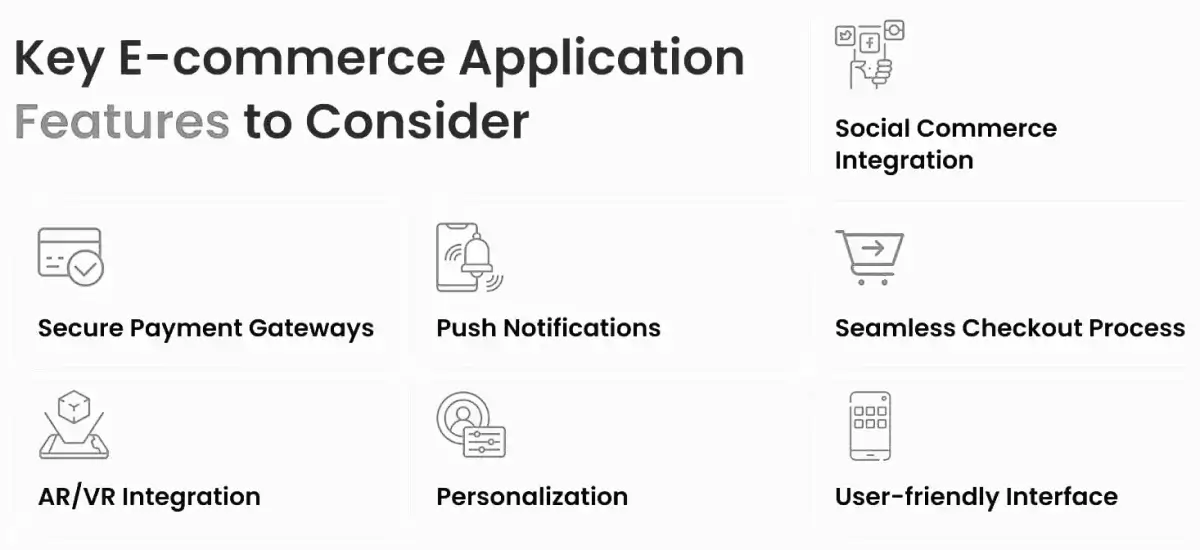
DXB APPS: Your eCommerce App Development Partner
DXB APPS is proficient in offering scalable ecommerce app development solutions to UAE business houses. Our mobile app development company utilize the most recent Ecommerce app development tools and Ecommerce app development frameworks such as Flutter and React Native to facilitate instantaneous market entry as well as feature-richness.
With extensive knowledge of local market complexities and regulatory regulations, DXB Apps experts leverage secure payment gateway integration, Arabic interface support, VAT support, and shipping integration. Sprint-delivery and feedback cycles make up rapid development cycles in order to enable your app to communicate with your brand and user needs.
Conclusion
Knowing the Mobile App Development Cost assists in decision-making for the business. It supports UAE companies with more effective planning, smart investment, and expansion at the right time. You can develop a powerful, intuitive eCommerce application at the cost of about AED 50,000 and add more sophisticated features to it in the future when your company is at the growth stage, i.e., AI, AR, or real-time analytics.
A smart decision with the right app development company, smart technologies, and proper maintenance will help you get your money back thanks to the lifetime loyalty a quality app will bring to you and more conversions.
FAQs
How to create an eCommerce app?
A basic Mobile App Development Cost around AED 50,000 for an application with a single vendor having limited features. Mid-level applications are AED 100,000–200,000, and enterprise solutions with full features are over AED 200,000.
Minimum cost to create an app?
If you roll out a bare minimum MVP with bare basics—catalog, cart, payments, basic UI—you can begin at AED 50,000. Anything below that would compromise on quality or experience.
What adds the most to the eCommerce app development cost?
Feature richness, choice of platform (iOS, Android, or both), and quality of design are high-cost drivers. Technology adoption such as AR, AI, or real-time tracking will raise the cost. Backend development, payment gateway integration, and maintenance also add to the final cost.
What is the time needed to create an eCommerce mobile app?
The time to develop depends on the level of complexity of the app, and on this, the private app would take 2-3 months, a mid-level app 4-6 months, and an enterprise-level complex solution 8 months and more. Design, testing and tuning requires time, thus the trick is to get planning done way before a deadline arrives.
Is application development cheaper when outsourced?
Indeed, the employment of offshore talented developers can reduce costs by 30–50%. Of course, quality, communications, and schedule coordination are crucial to provide. The majority of companies integrate local strategy and UI/UX with offshore development to make it cost-saving as well as high-performing.
How much does it cost to build an eCommerce app in Dubai?
To build a e-commerce app in Dubai typically costs between AED 8,000 and AED 200,000+, depending on features, design, integrations, and development expertise.
What factors affect eCommerce app development cost?
E-commerce app development cost depend on features and complexity, platform choice, design quality, team expertise, integrations, testing, and maintenance, with advanced features and skilled talent significantly increasing the overall cost.
What features increase the cost of an eCommerce app the most?
The biggest drivers of eCommerce app development cost are advanced features like AR and AI, complex backend systems such as multi-vendor support and analytics, and extensive customization with strong security requirements.
How can I reduce the cost of developing an eCommerce app in Dubai?
To cut eCommerce app costs in Dubai, build an MVP with core features, use cross-platform frameworks like Flutter, leverage Shopify or WooCommerce, use pre-built components, and work with a single agency for better efficiency.
What are hidden costs in eCommerce app development?
The hidden eCommerce app development cost usually emerge after launch during operations, and if not anticipated, they can significantly affect the project’s overall budget and viability.

